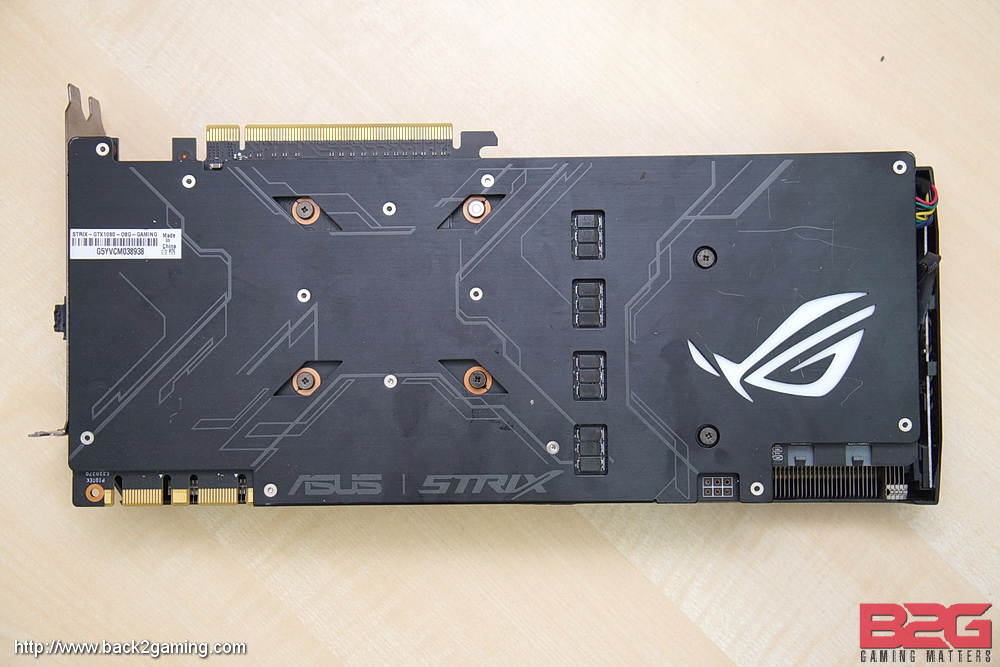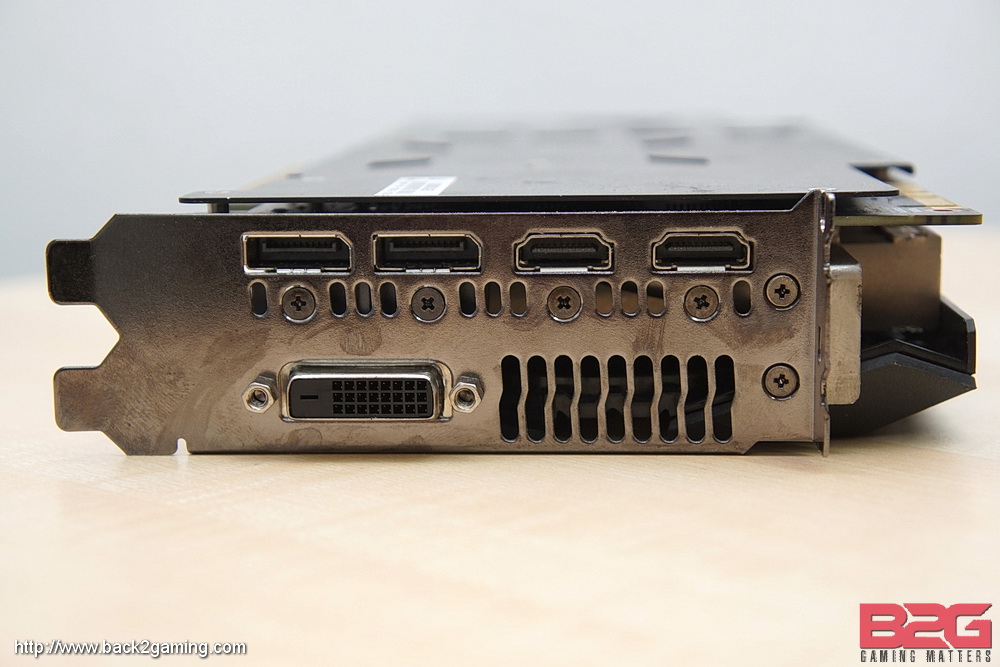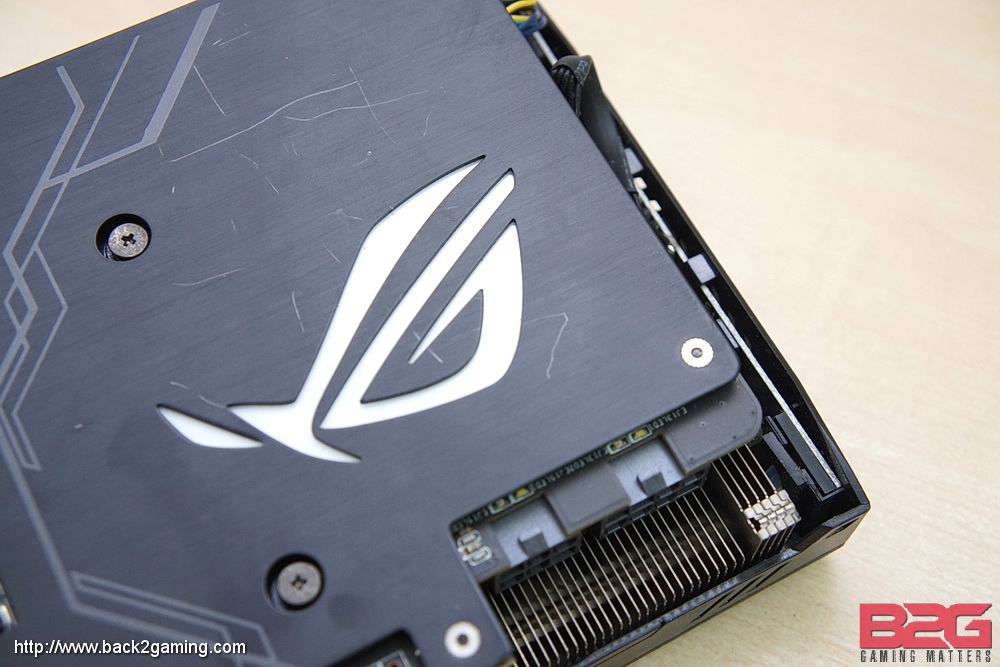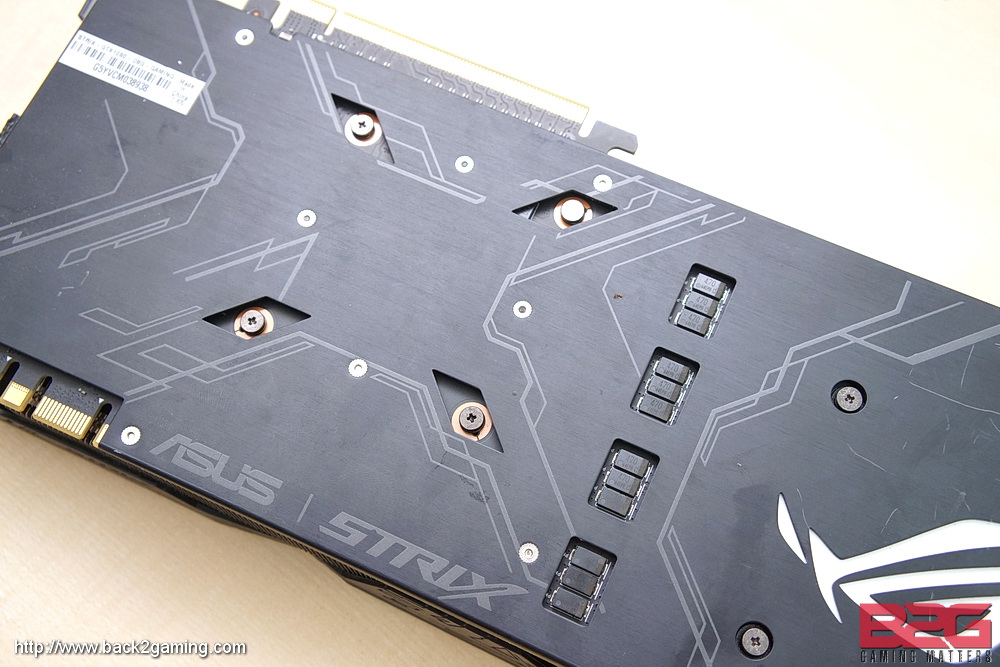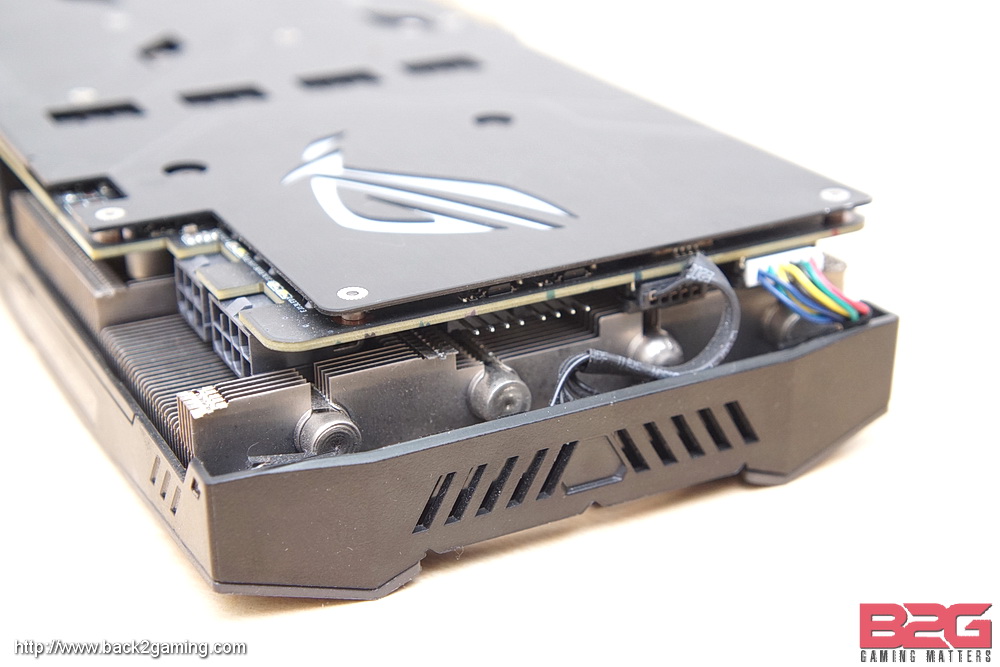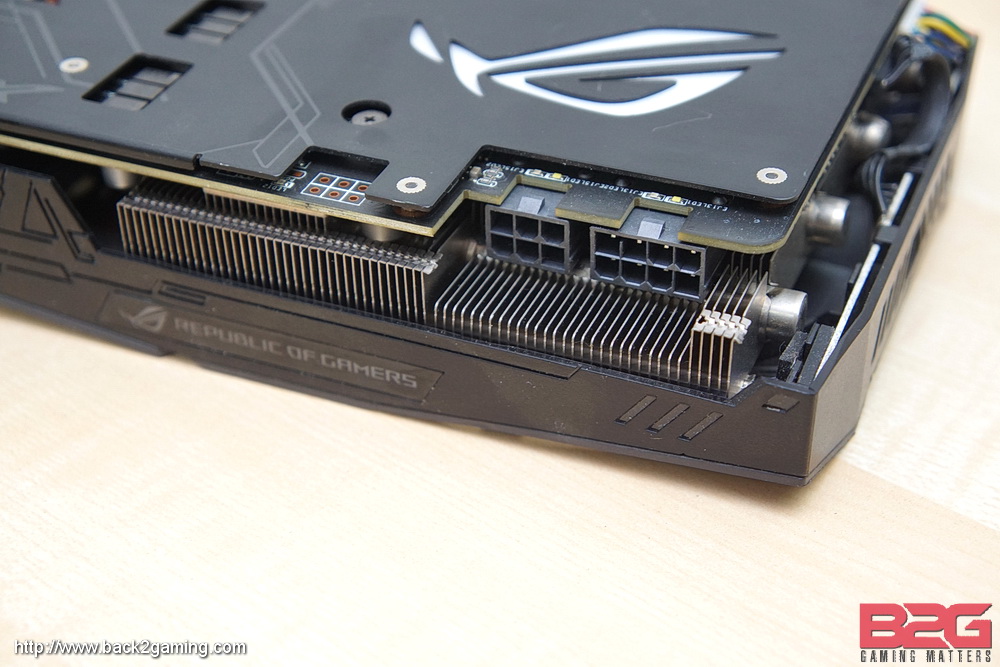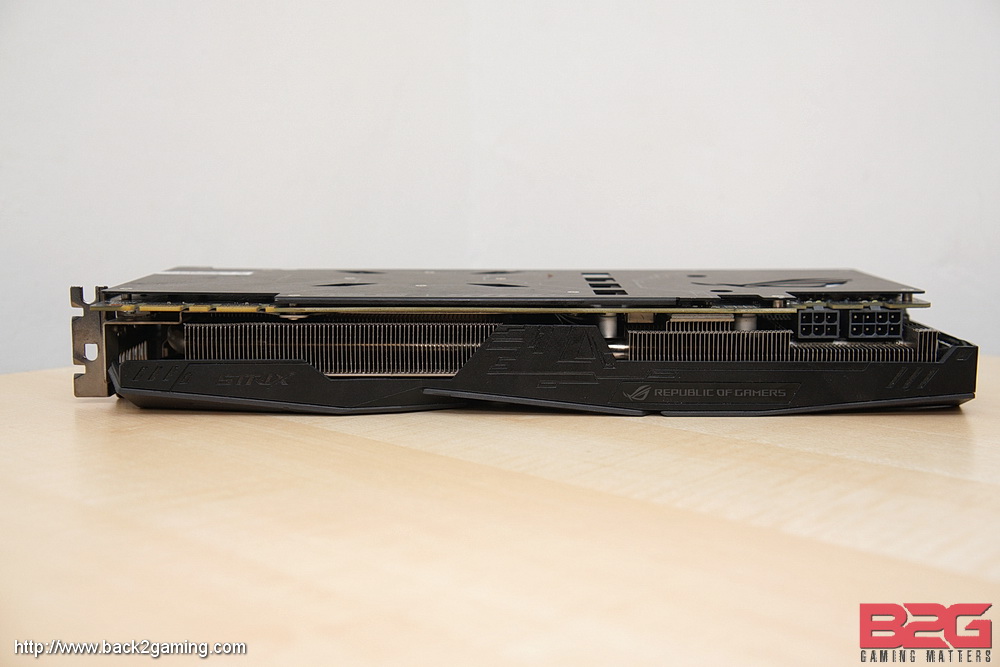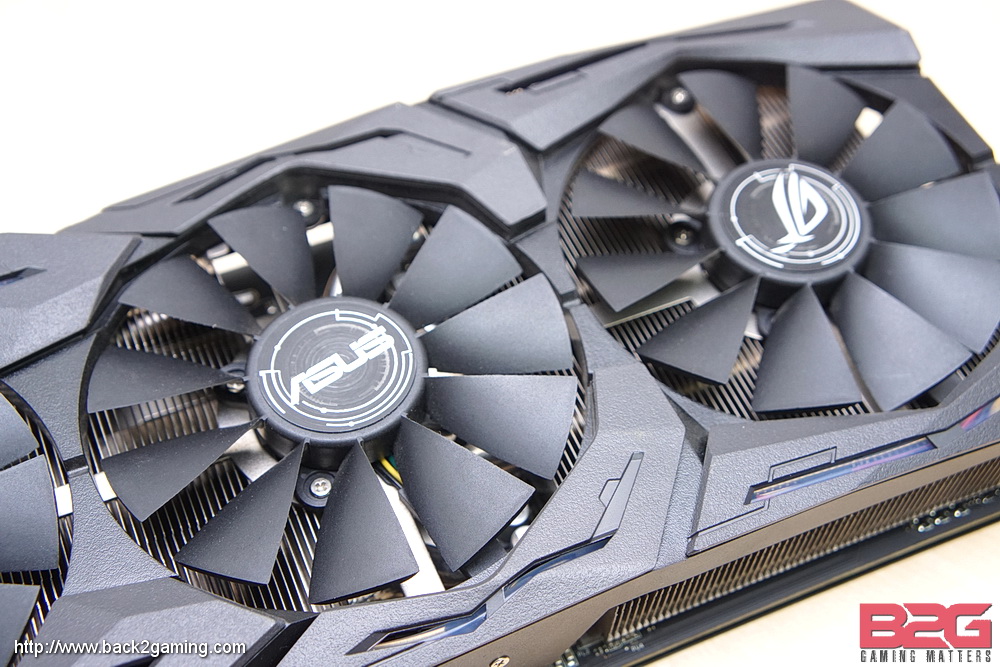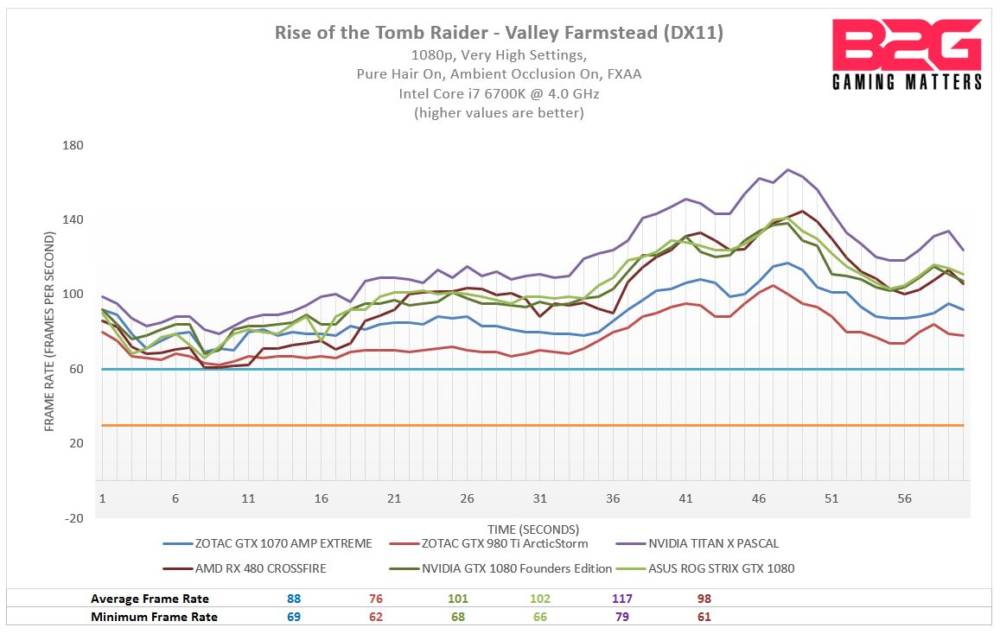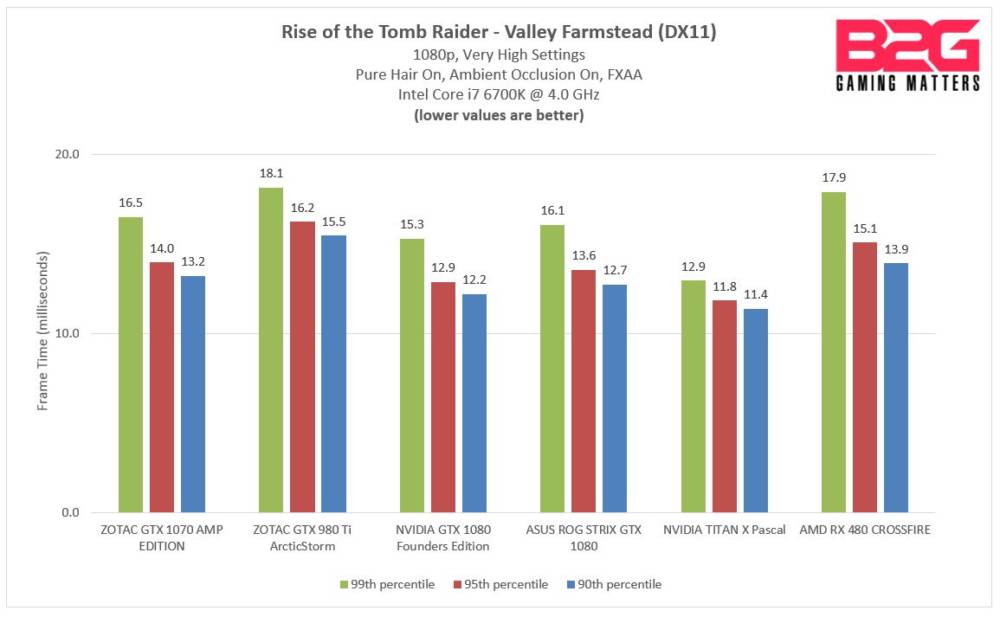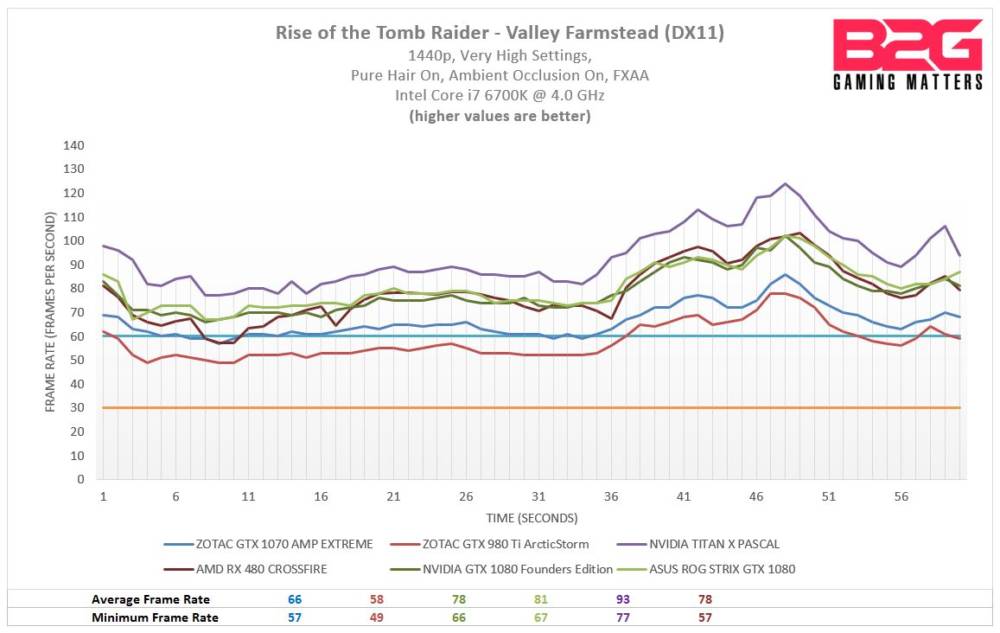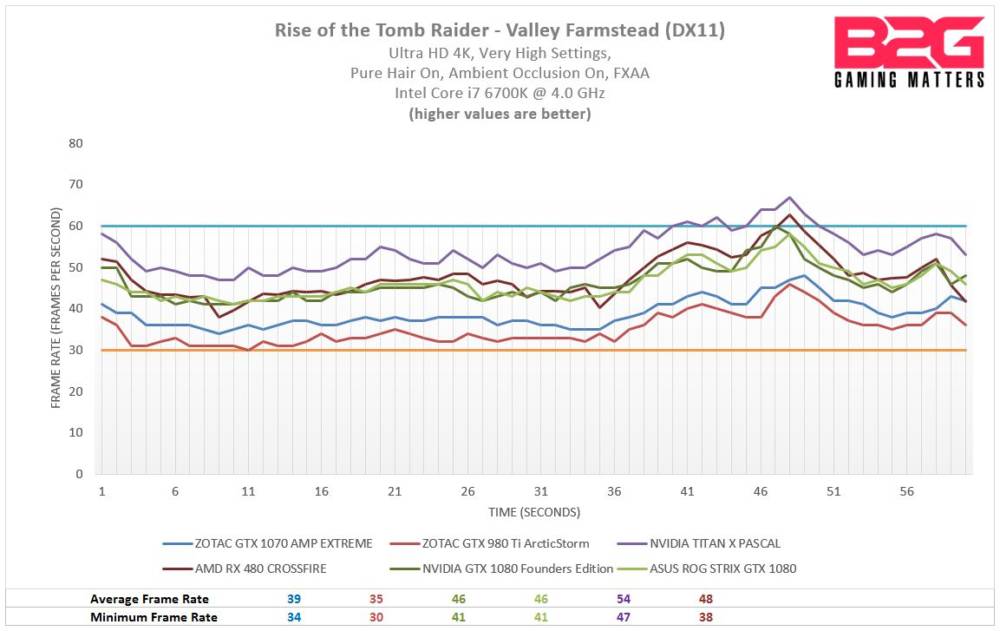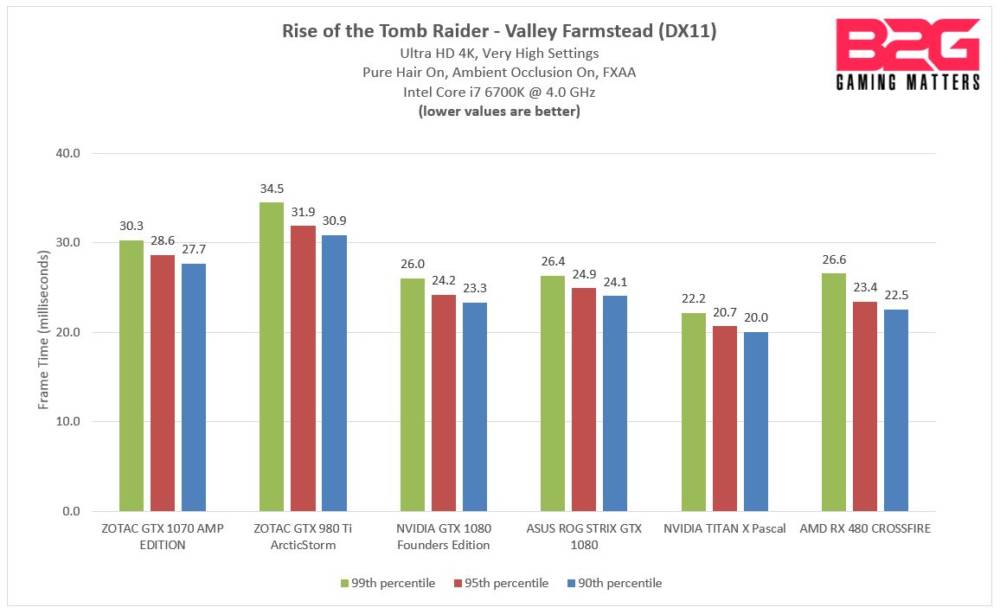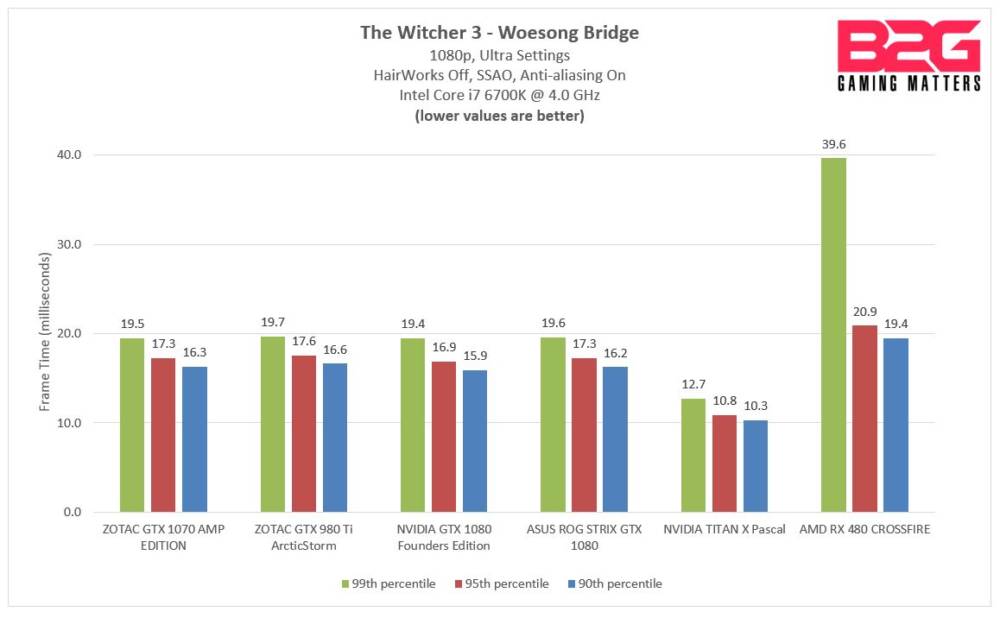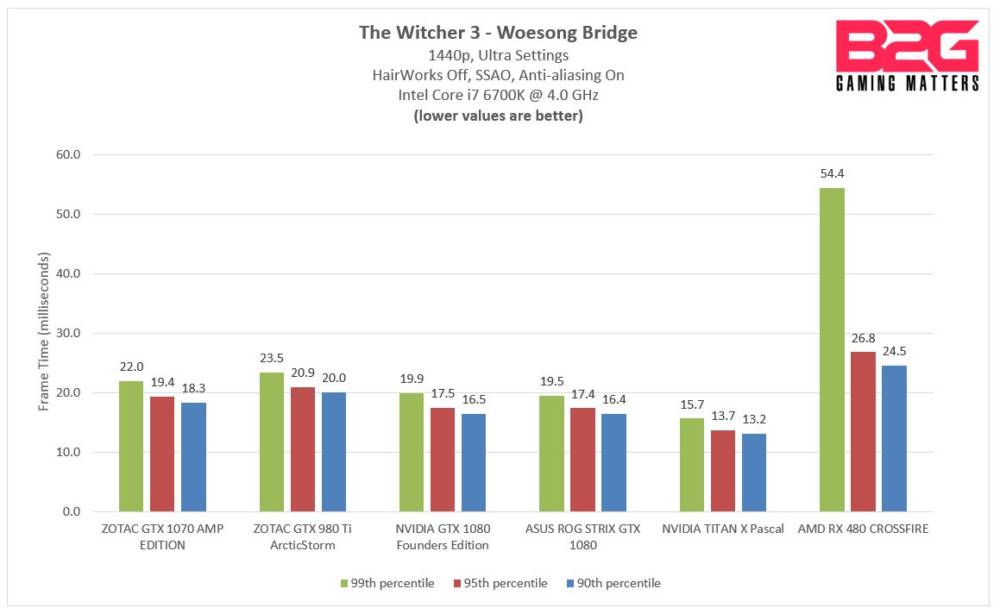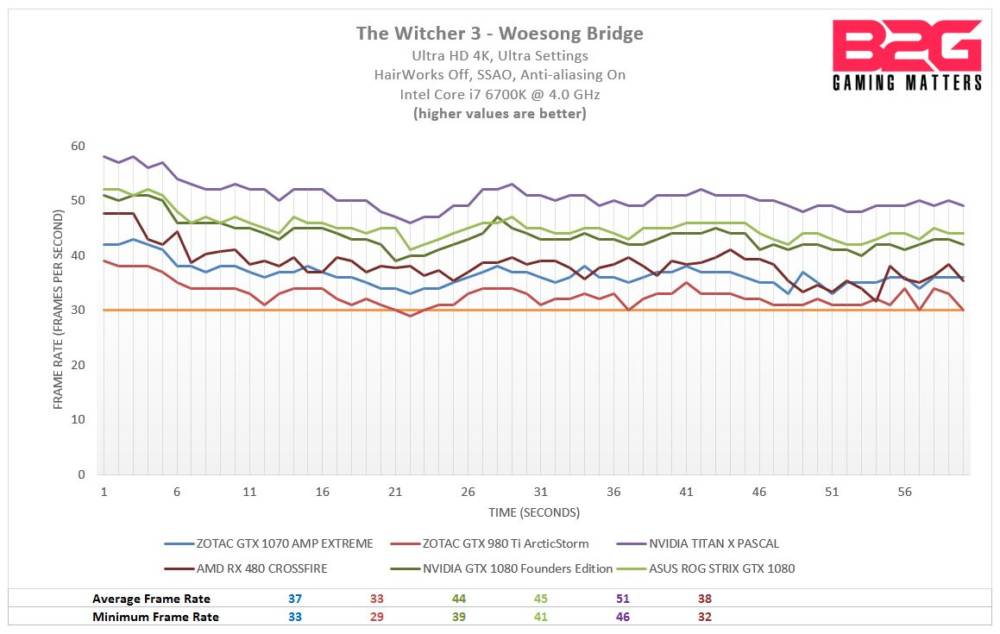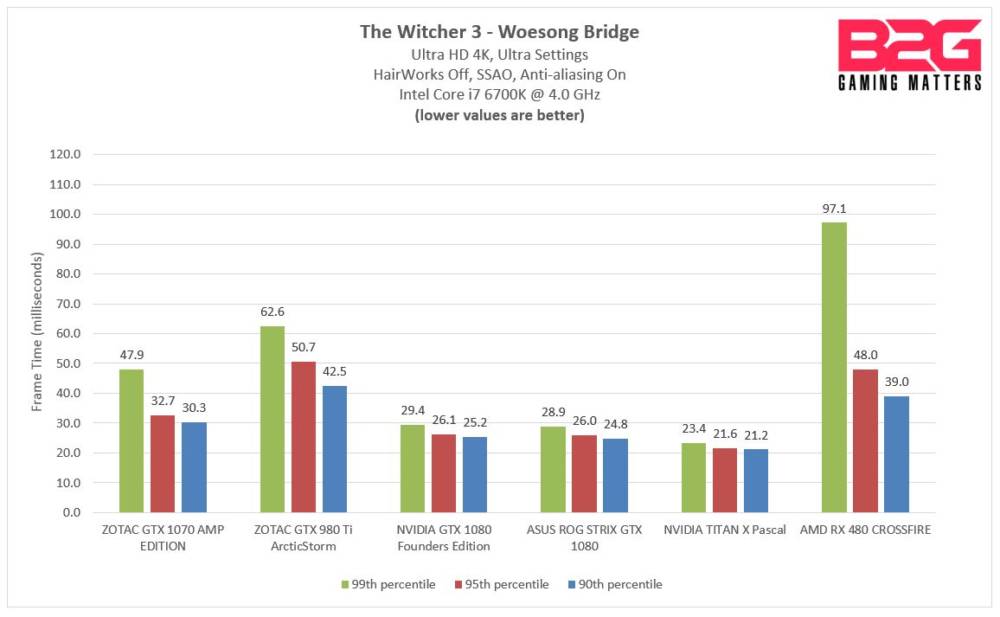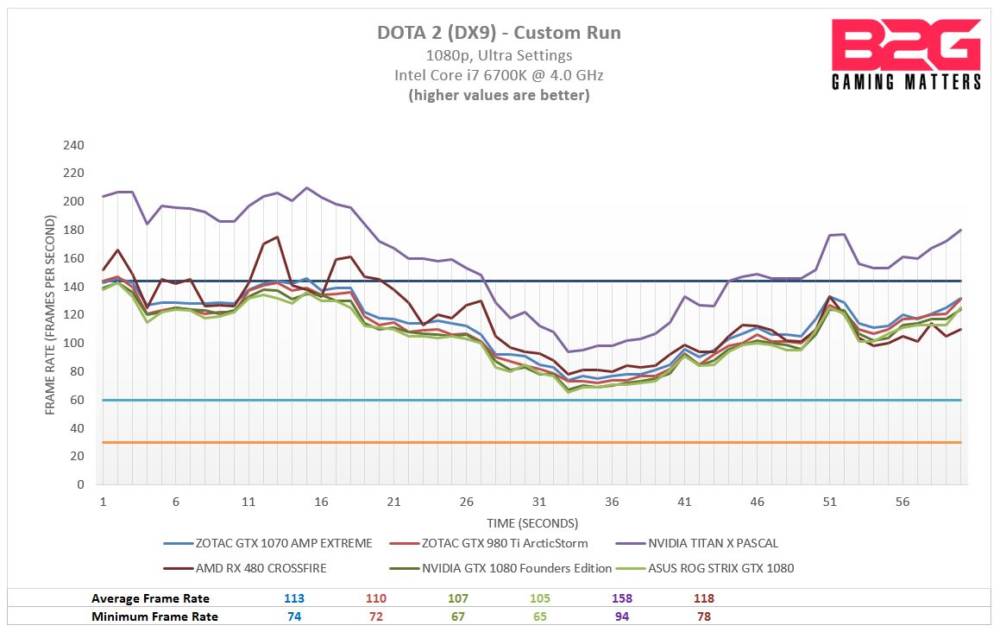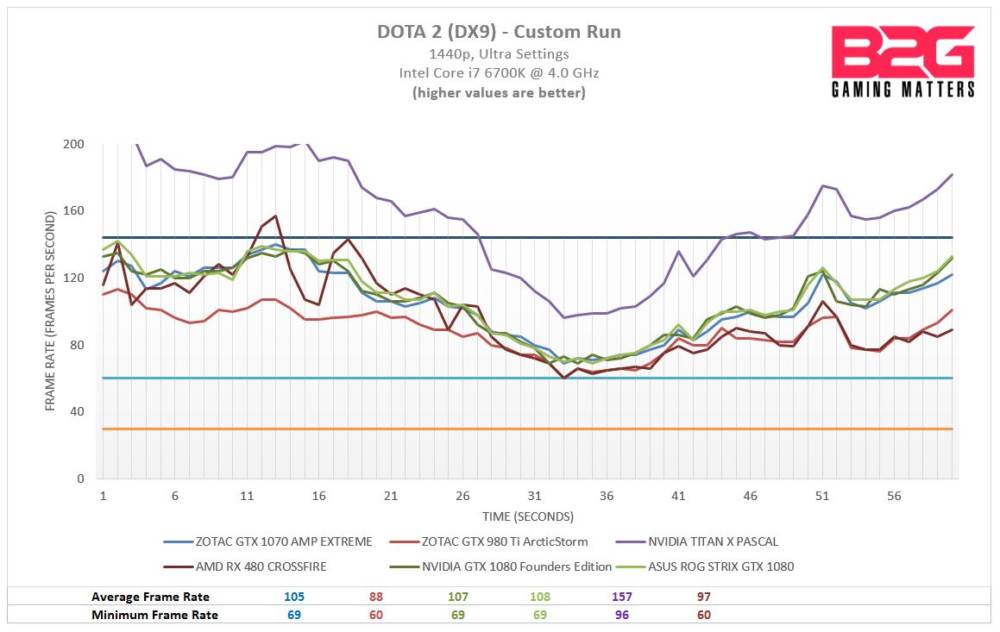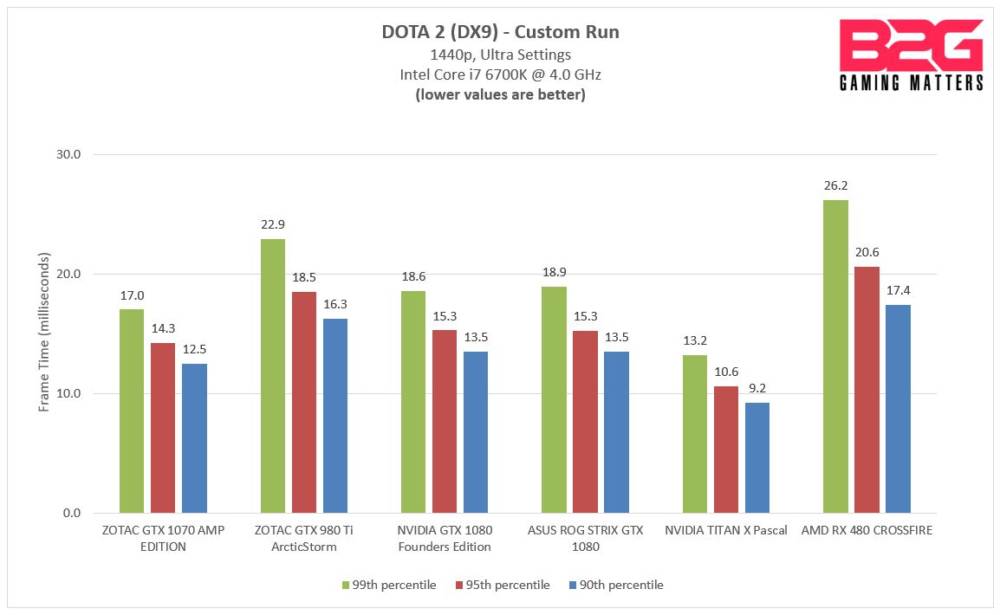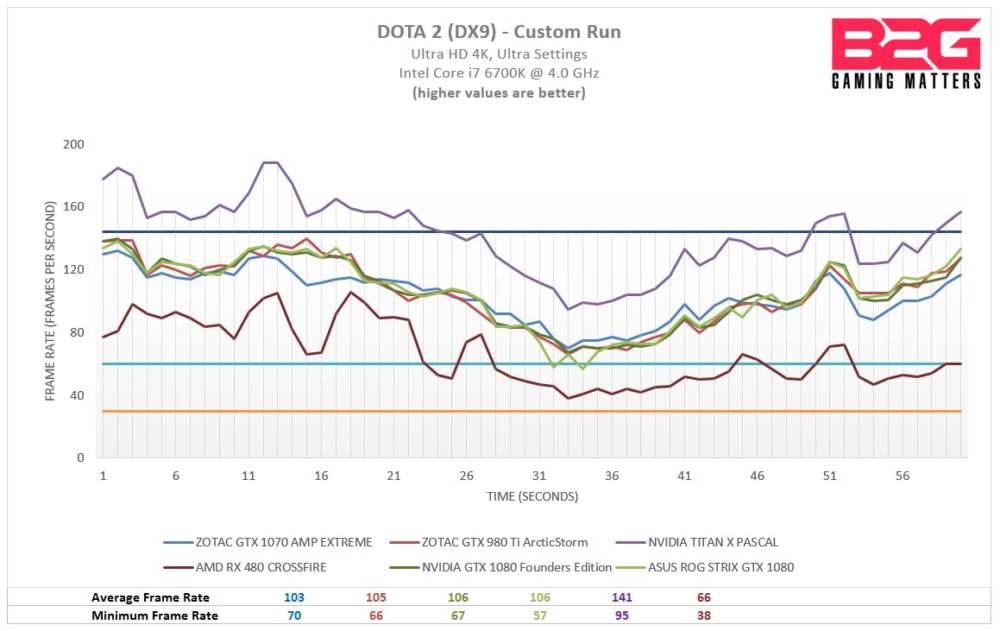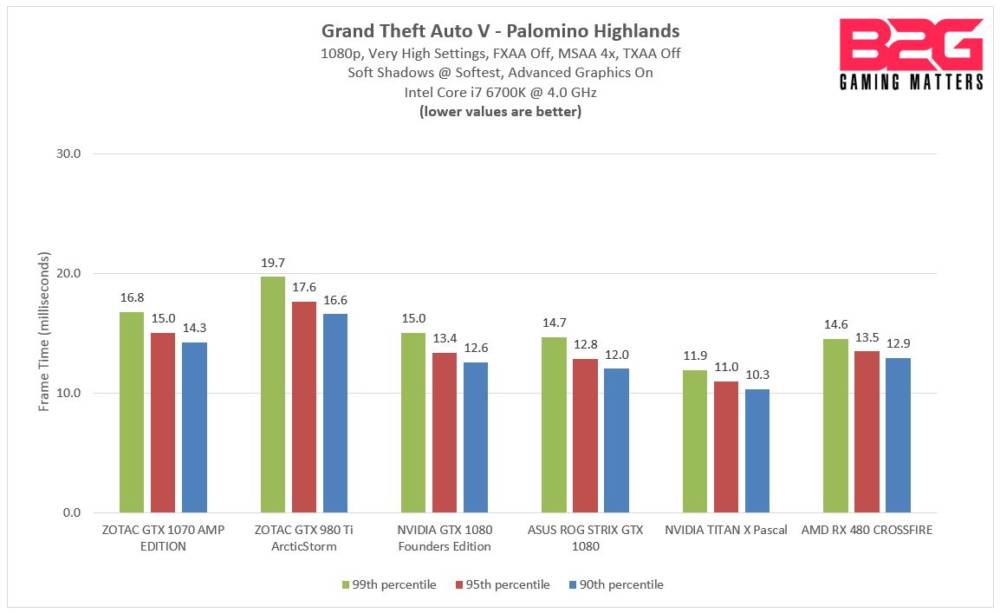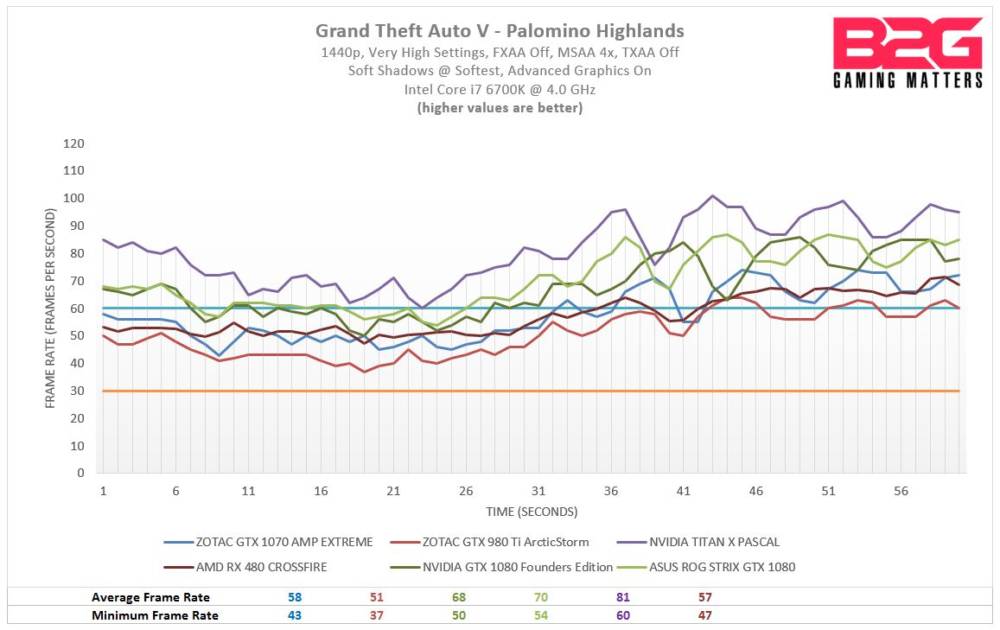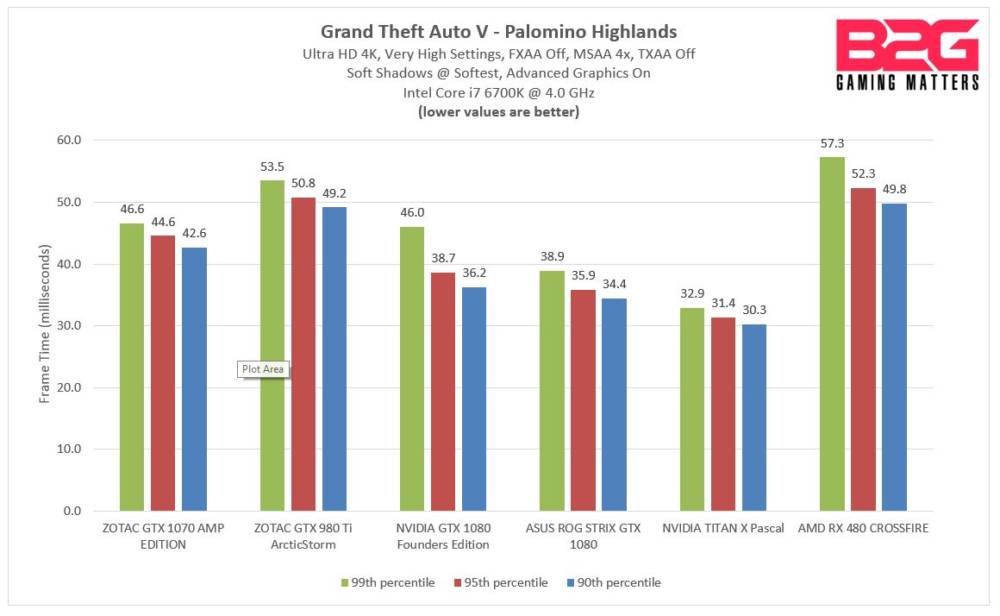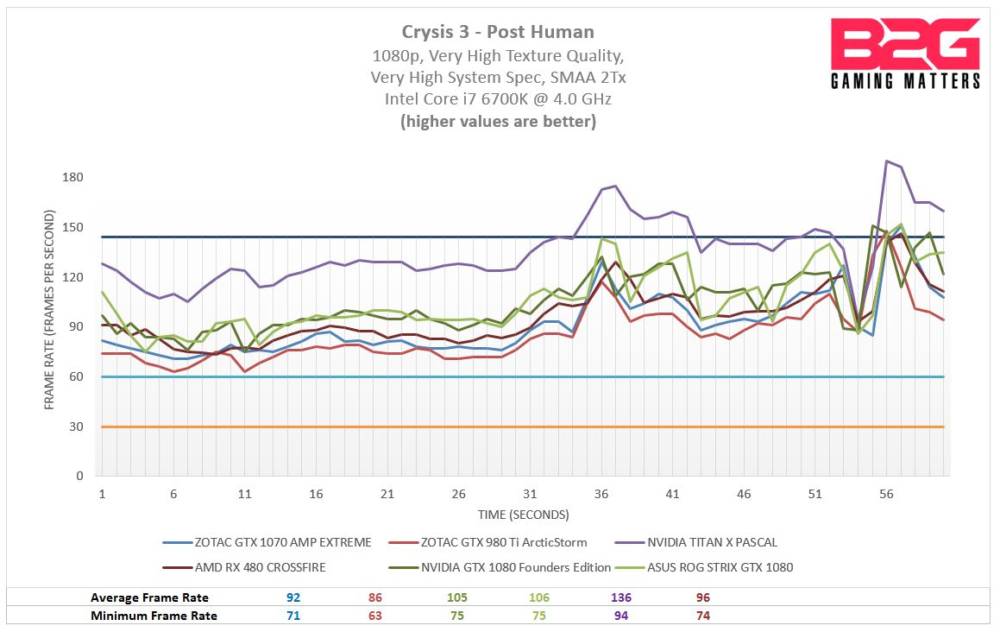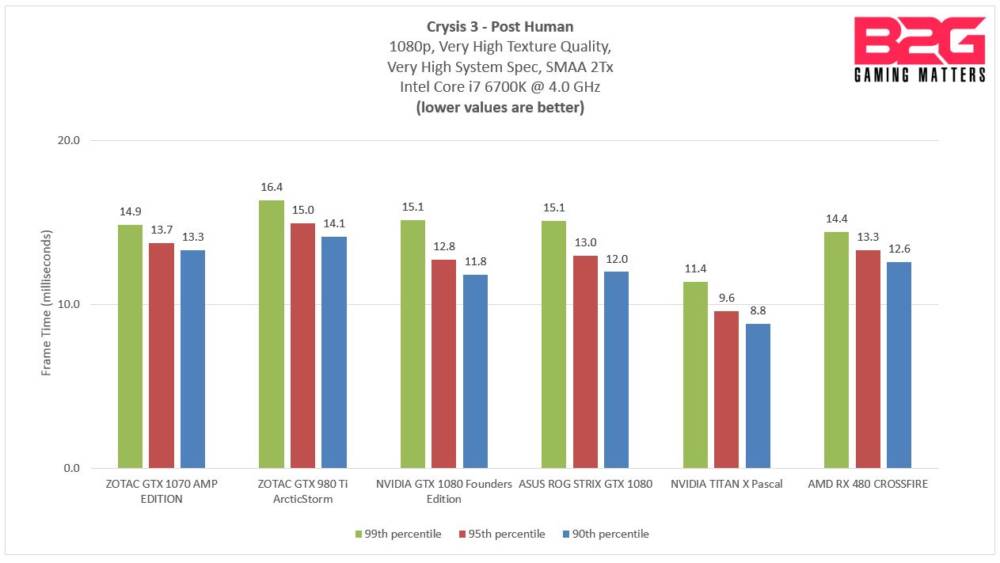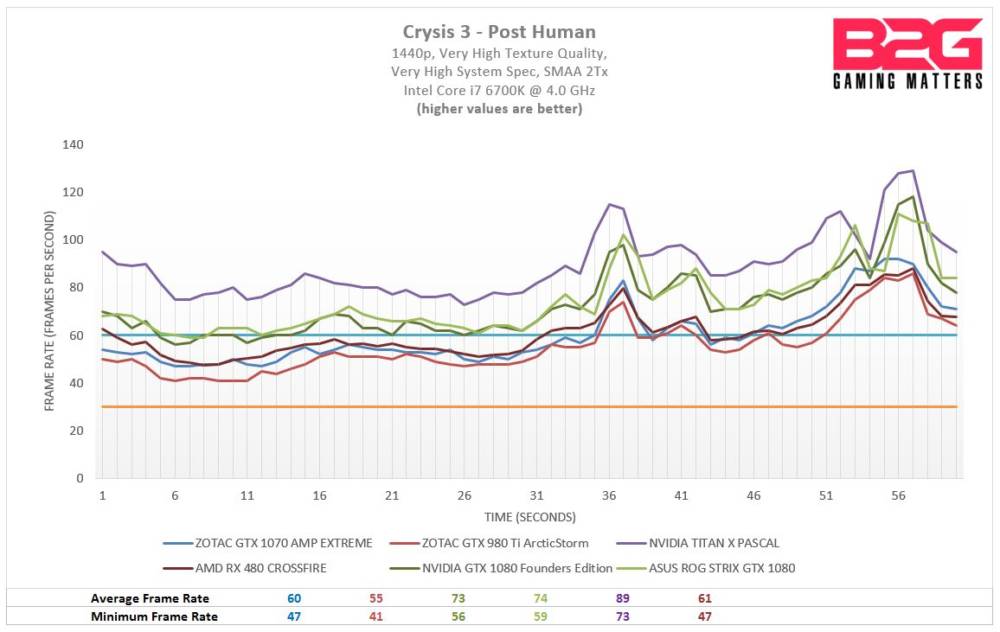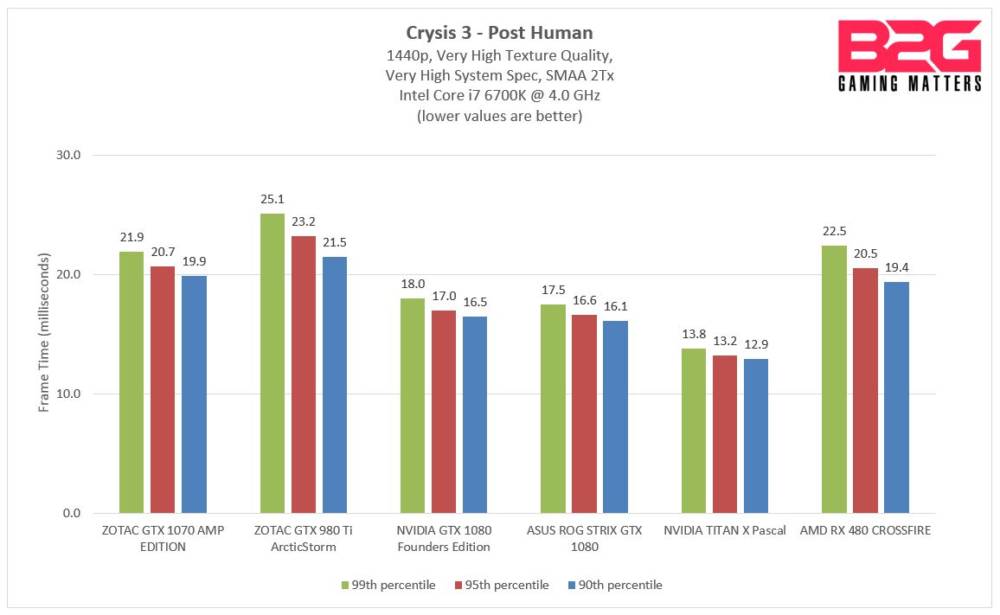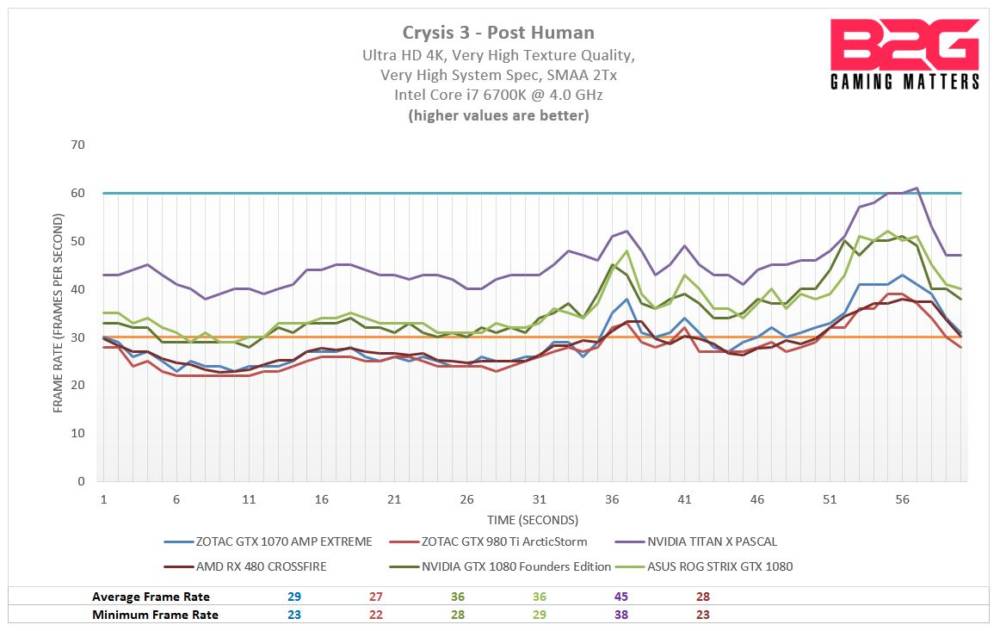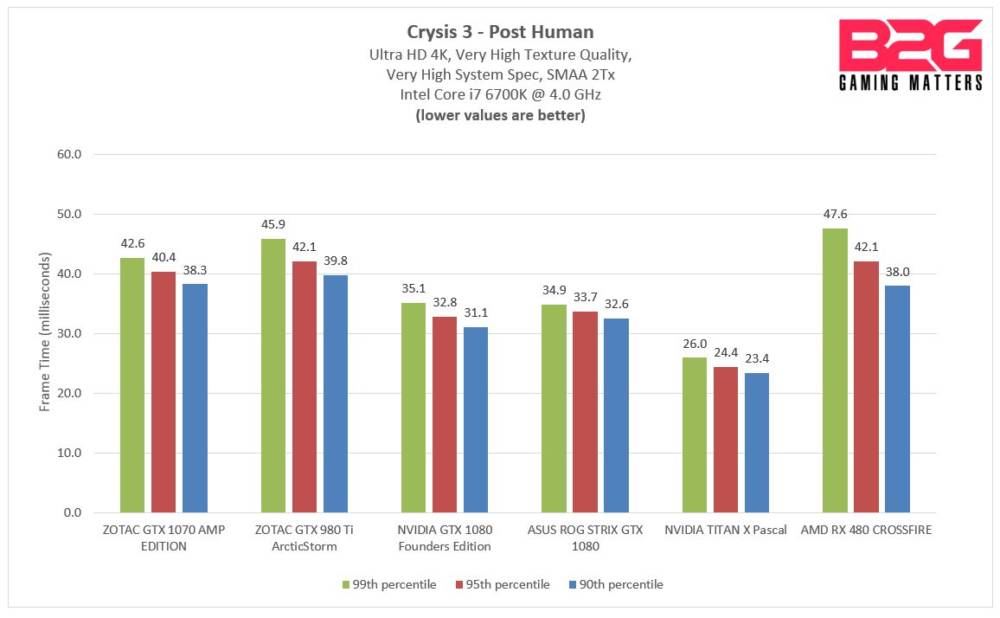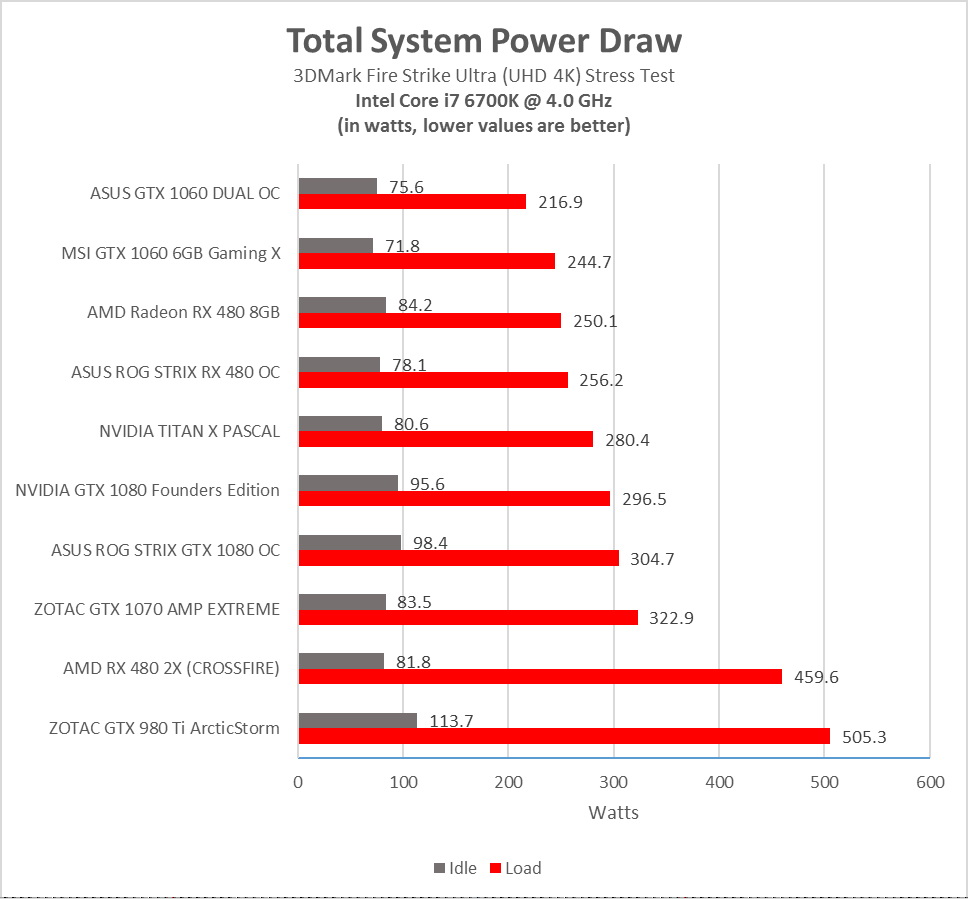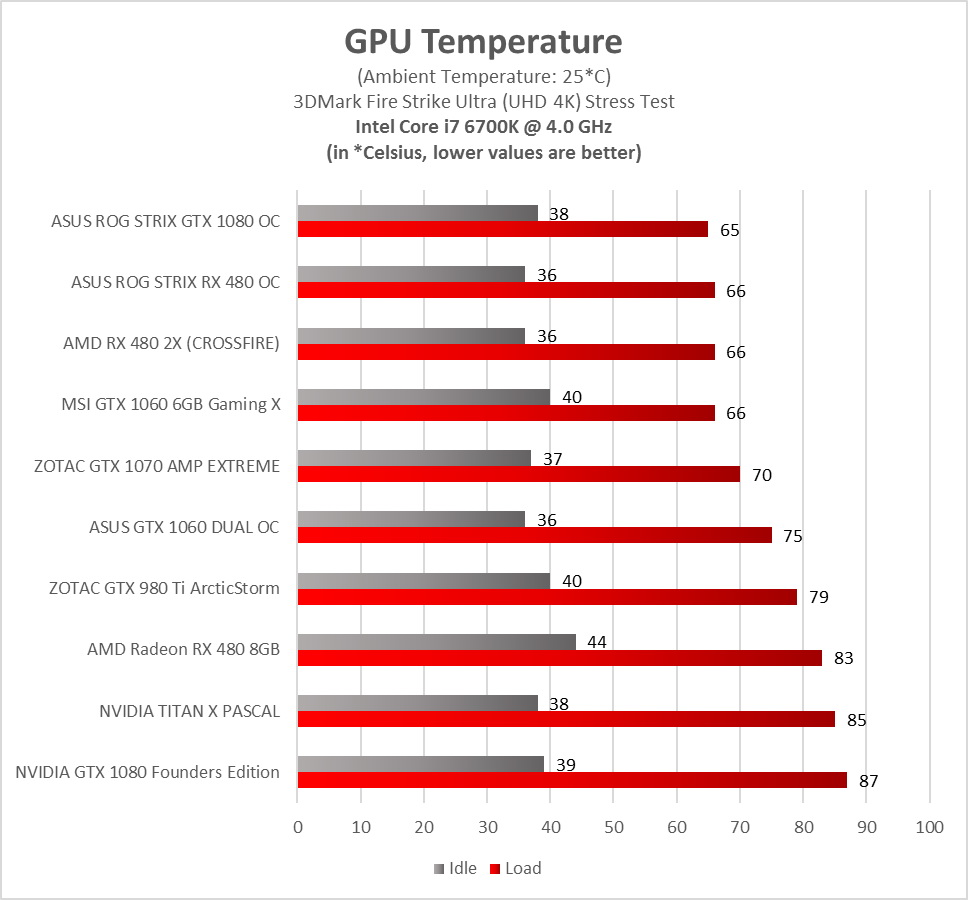[signoff icon=”dollar”]
Price / Where to Buy:
US – SRP: US$720 – [easyazon_link identifier=”B01GRRRRLO” locale=”US” tag=”back2gaming-20″]ASUS ROG STRIX GTX 1080 OC[/easyazon_link]
PH – Approx. Php43900
[easyazon_infoblock align=”none” identifier=”B01GRRRRLO” locale=”US” tag=”back2gaming-20″]
[/signoff][section label=”Introduction”]
NVIDIA is in under no circumstance pressured to release a new GPU this year. AMD has pretty much served no competition to what is arguably the most fierce competition in the component industry with previous coinciding releases help serve as the foundation of healthy and thriving PC gaming economy. Nowadays, its not the same fierce close releases we saw in the past but NVIDIA is still advancing GPU technology further and with the company advancing VR technology heavily, they needed a GPU for the consumer that could help do the job. Enter the GeForce GTX 1080. With future applications in mind, NVIDIA released the GTX 1080 with the intention of fueling the current trend for VR content. It makes sense as its a potential new revenue stream for their company and this release hits two birds with one stone: a GPU that can handle higher resolution and more demanding applications while also delivering performance required for creating much richer VR experiences.
NVIDIA’s GTX 1080 is by far the most powerful card they release to date and it is by no means rivaled. Today we take a look at the NVIDIA reference design GTX 1080 Founders Edition. NVIDIA basically titled the referenced card to Founders Edition and are now committing to making the card available all throughout the duration of the product. Read on and see more about the flagship GeForce GPU from NVIDIA right now!
ABOUT THE NVIDIA GTX 1080 Founders Edition
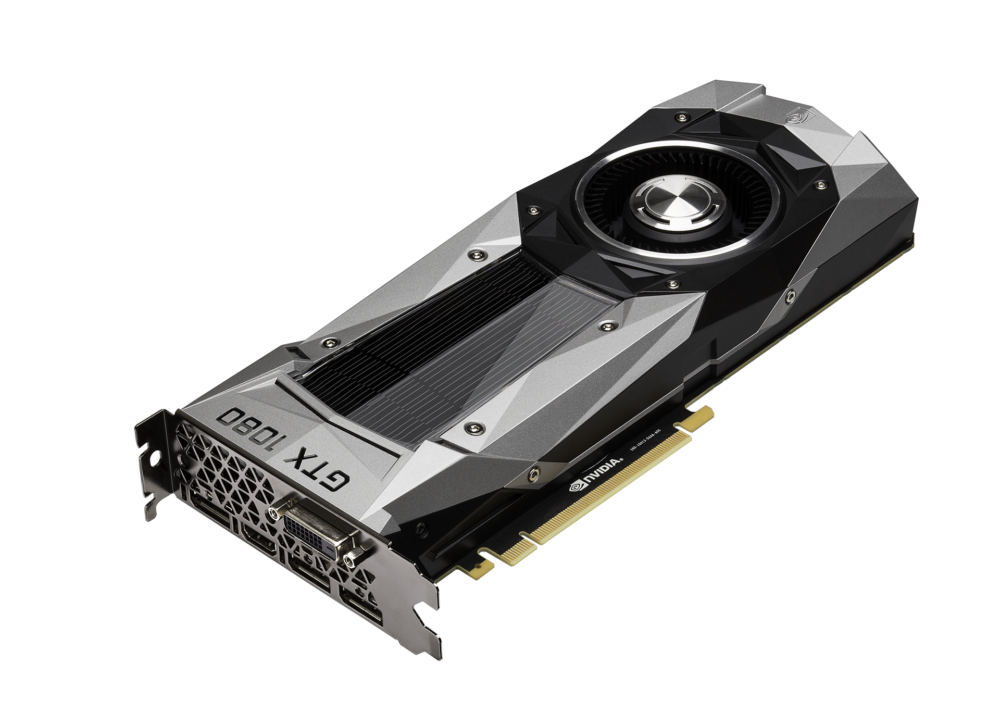
NVIDIA’s new Pascal architecture is a remarkable engineering feat and something which has enabled the company to roll-out numerous technologies for various industries like deep-learning and super-computing but as a GPU company, NVIDIA is still regarded as a gaming company and the release of the much anticipated GTX 1000-series graphics cards is something that drives the industry further as it presents new possibilities for gaming content. That said, NVIDIA announced the new GeForce GTX 1080 and GTX 1070 on May 5th, 2016 putting to rest numerous rumors on naming and specifications on their new GPU series. Starting off with the new GPU, the Pascal based GP104 GTX 1080, sports 2560 CUDA cores running 1607Mhz and has a Boost clock of 1733Mhz. The card will come with 8GB of GDDR5X memory clocked in at 2500Mhz. The GTX 1080 boasts the highest clock rates ever seen on a GPU to date in comparison to last-generation’s models which came in around 1000Mhz.
The new Pascal GPUs will natively support DirectX 12 (12_1), OpenGL 4.5. Display options include three DisplayPort 1.4, one HDMI 2.0b, and one Dual-Link DVI connector. The reference GTX 1080 is powered off a single PCI-e power connector and is rated for 180W. NVIDIA designs a new SLI connector dubbed SLI HB (high-bandwidth) which uses both SLI fingers for maximum bandwidth utilization.
SRP for the GTX 1080 is $699 for the Founder’s Edition and will have an MSRP from most AIB starting at $599.
Simultaneous Multi-Projection
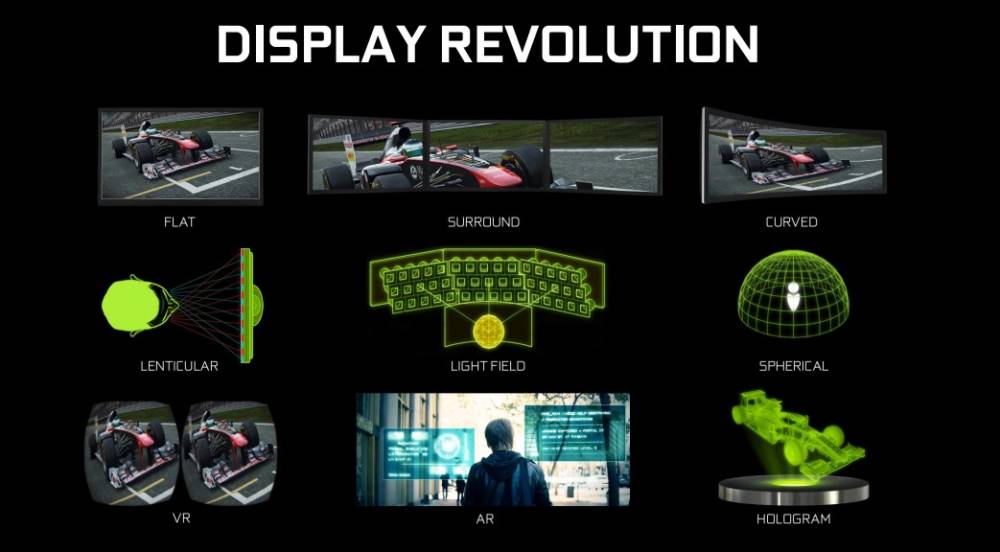
This technology has been around since Maxwell but NVIDIA has refined the technology further to increase performance and offer a more efficient way of handling more complex display scenarios. Traditionally, surround displays are rendered as flat planes and are display onscreen as such which gives us a rather unnatural field of view. The same can be said for curved displays. NVIDIA corrects this via the new Pascal GPUs by allowing a better method of adjusting the output image display via simultaneous multi-projection. Another use of the technology is to save up on processing power wherein developers can opt to render images outside of the visual focus area of the user to increase performance.
Ansel
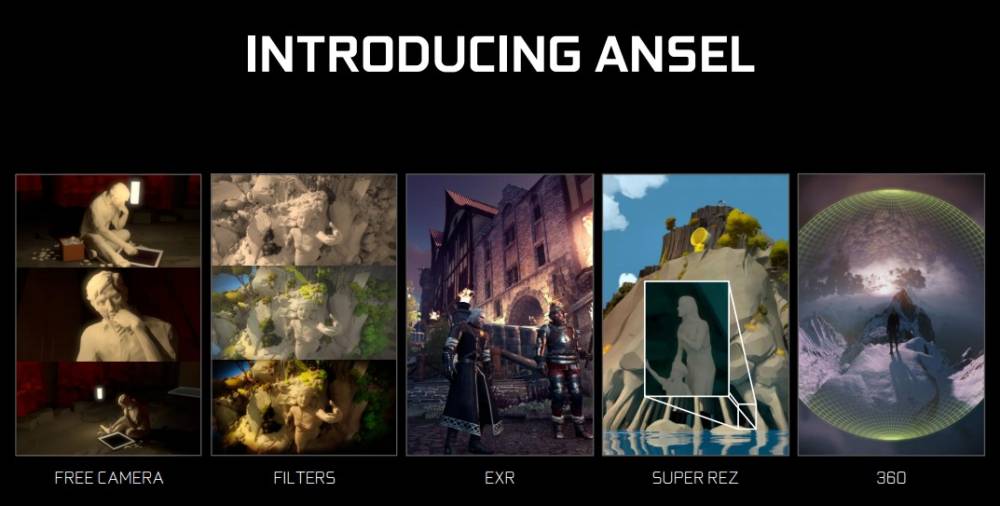
User-generated content is one of the growing trends in gaming right now but streaming and game footage aside, in-game photography and movies created using gameplay footage have been reserved for professionals and specialists who have access and skills in the tools required in this artform. NVIDIA wants to change that by allowing end-users and gamers to create highly-personalized images and footage from games using Ansel: a tool and API coming soon to games featuring the following key capabilities to help you capture in-game moments like never before:
- Free Camera – Compose your shot anywhere, from any angle.
- Post-Process Filters – Adjust the look and mood of your favorite games.
- EXR Capture – Capture in the highest color spectrum for HDR images.
- Super Resolution – Capture every detail with the highest-resolution images.
- 360 Capture – Snap 360-degree panorama images in mono or stereo.
Ansel’s feature set lets players capture image in-game freely without being limited to the current player view. With Ansel, players can rotate the camera and focus on any detail of the current scene to allow maximum creativity in creating that perfect in-game capture. Filters are also available just to set the mood basically allowing you to create Instagram-ish posts straight from any game at the best quality possible. Ansel allows EXR capture for maximum color spectrum for use in Photoshop or other photo-editing software that support the format.
Basically Ansel gives end-users and content creators a level of control unlike anything we’ve had before. Free control over perspective, resolution and quality to provide you with the image to create stunning in-game photography and motion videos from games that support it.
Ansel enables amazing in-game screenshot captures by providing game developers with new NVIDIA driver APIs using GeForce® GTX GPUs. Game support for Ansel is coming soon, and will include titles such as The Witcher 3, No Man’s Sky, The Witness, and more. Ansel will also be supported by all GTX 600 cards onwards.
[section label=”About the ASUS ROG STRIX GTX 1080″]About the ASUS ROG STRIX GTX 1080
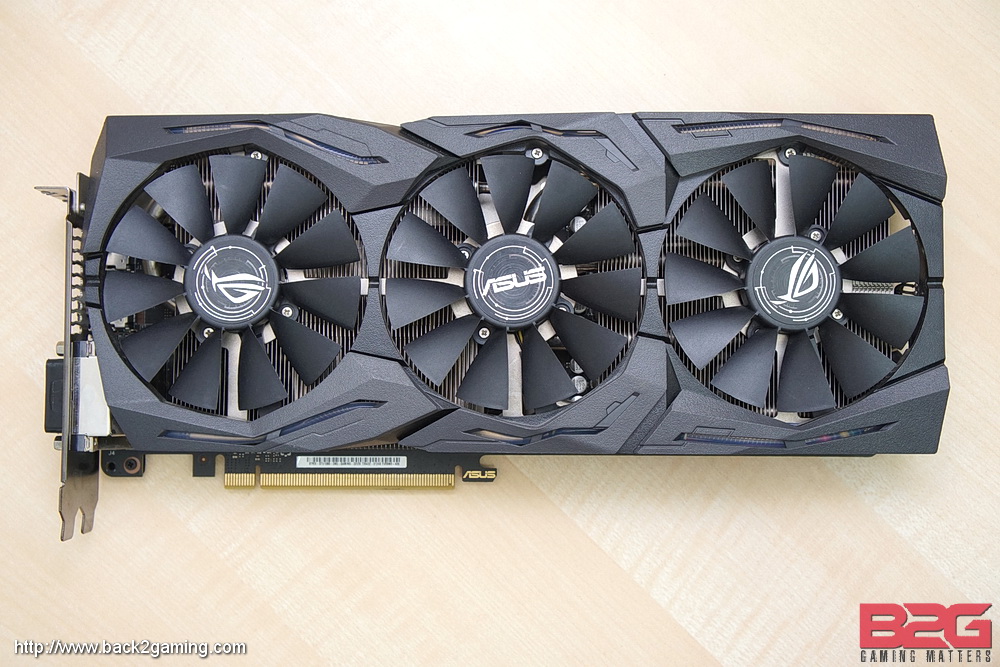
ASUS has promoted the Strix branding to become a daughter-series to the primary flagship line-up of Republic of Gamers (ROG) products and will serve as the mainstream brand for ASUS’ gaming oriented offerings. The ASUS ROG Strix implements a couple of new features to its cooler merging a high-end feature set with the more mainstream line-up from ASUS. The ROG Strix models currently sport a large dual-slot, triple-fan cooler with RGB trim highlights that are fully LED illuminated together a full-backplate with the ROG logo also RGB-LED illuminated.
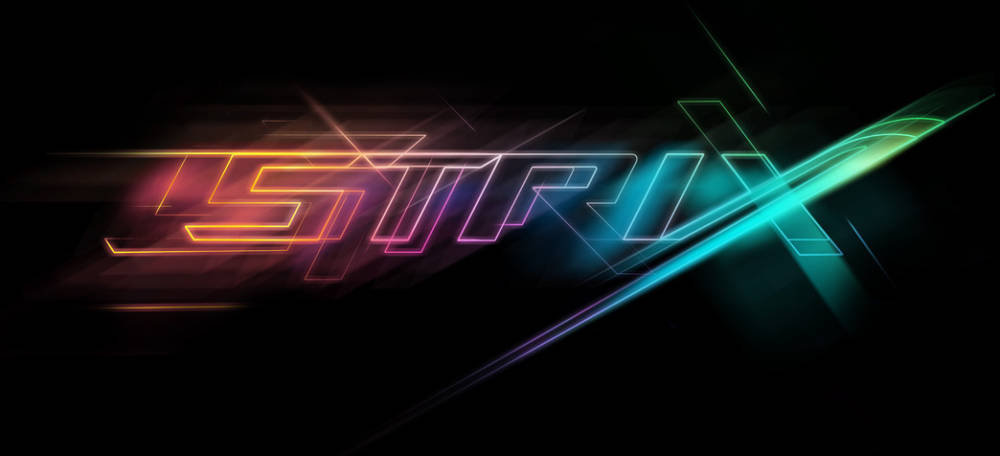
The ASUS ROG Strix GTX 1080 sits on top on the current ASUS GPU stack featuring a couple of improvements over the Founders Edition. Specs-wise its running with variable clocks with a maximum out-of-box boost frequency of 1936Mhz and a base clock of 1784Mhz. That is almost a 200Mhz bump over stock and is completely complimented by the new ROG Strix triple fan cooler. The GDDR5X memory on the ASUS ROG STRIX GTX 1080 remains untouched still clocking in at an effective 10000Mhz.
[section label=”Product Gallery”]Product Gallery – ASUS ROG STRIX GTX 1080
AURA LIGHTING
As mentioned, the ROG Strix cooler features the ASUS AURA lighting which allows user-customizable lighting via software. Unique to the ASUS ROG Strix GTX 1080 though is the ability to sync with enabled motherboards via AURA sync which right now is currently available to the ASUS ROG Rampage V Edition 10 motherboard.
https://www.instagram.com/p/BJKRXAjD6j0/
[section label=”Performance Testing”]PERFORMANCE
Test Setup
Processor: Intel Core i7 4790K
Motherboard: ASUS ROG Maximus VII GENE
Memory: Kingston HyperX Beast DDR3-2133 32GB
Storage: Plextor M6e Black Edition 256GB
PSU: BitFenix FURY 650G
Cooling: Corsair H100
Monitor: ASUS ROG Swift PG27AQ UHD Monitor
VGA: ASUS ROG STRIX GTX 1080 OC
For a full-hardware workout, visit http://www.futuremark.com for our benchmarks of choice.
For benchmarking methodology please see our game benchmark method guide.
Driver: NVIDIA GeForce 372.54, AMD Crimson 16.7.3
Operating System: Windows 10 64-bit
Frame rates and frame times of a 60-second game play were recorded using FRAPS v3.5.99. The test results are the average of 3 benchmark runs. Since this is a GPU review, we benchmarked the area of the games that put heavy load on the GPU.
All our test runs are repeatable, click the links below for area and details. Read our benchmarking methodology.
- Crysis 3 – Post Human
- Grand Theft Auto V – Palomino Highlands
- The Witcher 3 – Woesong Bridge
- Rise of the Tomb Raider – Valley Farmstead
- DOTA2 – Shanghai Major Finals, Game 2, Team Secret vs Team Liquid (23:45 – 24:45)
The games and corresponding image quality settings used are shown below:
[accordions ] [accordion title=”Game Detail Settings” load=”hide”]Crysis 3
Resolution: 1920 x 1080
Texture Resolution: Very High
Anti-aliasing: SMAA 2Tx
System Spec: Very High
Anisotropic Filtering: 16x
Motion Blur: Disabled
Grand Theft Auto V
Resolution: 1920 x 1080
FXAA Off
MSAA 4x
TXAA Off
Very High settings
Anisotropic Filtering: 16x
Motion Blur disabled
Advanced Graphics enabled
The Witcher 3
Resolution: 1920 x 1080
Frame Rate: Unlimited
Nvidia HairWorks: Off
Ultra Settings
Motion Blur: Off
Blur: Off
Anti-aliasing: On
Bloom: On
Sharpening: High
Ambient Occlusion: SSAO
Depth of Field: On
Chromatic Aberration: Off
Vignetting: On
Light Shafts: On
Rise of the Tomb Raider
DirectX11
Resolution: 1920 x 1080
Anti-aliasing: FXAA
Very High settings
Ambient Occlusion: On
Pure Hair: On
Vignette Blur: Off
Motion Blur: Off
Bloom: On
Tessellation: On
Screen Space Reflections: On
Lens Flares: On
Film Grain: Off
DOTA2
DirectX9 (default)
Resolution: 1920×1080
Best-Looking slider setting (non-Ultra)
FPS_MAX 240
Vsync OFF
Note: Some proprietary technologies of NVIDIA like PCSS, HBAO+, and HairWorks work on AMD GPU’s but we decided not to use them.
Rise of the Tomb Raider
The reboot of the gaming phenomenon Tomb Raider puts players in Lara Croft’s hiking boots as we pick-up from the last game. Featuring upgraded graphics, DX12 support and new image quality improvements, this game challenges new hardware with its graphical offering.
The Witcher 3
CD Projekt Red’s latest installment in the Witcher saga features one of the most graphically intense offering the company has to date. As Geralt of Rivia, slay monsters, beasts and men as you unravel the mysteries of your past. Vast worlds and lush sceneries make this game a visual feast and promises to make any system crawl at its highest settings.
DOTA 2
The most popular game on Steam and the biggest competition in eSports; DOTA 2 is powered by the Source 2 engine. The game is fairly light on low to medium settings but maxed out with heavy action on screen especially during clashes can really stress most systems especially with Reborn update. This is a game where frame times matter as responsiveness is very important in high-stakes competition.
Grand Theft Auto V
The fifth and most successful installment to date in the highly controversial Grand Theft Auto series brings a graphical overhaul to the PC version of GTA V which many have lauded as a superior approach in porting a console game to PC. Featuring large areas and detailing, GTA V is a highly challenging application in terms of scene complexity.
Crysis 3
The most visually intense game to have ever been made during its time. Prophet is back to take on the Ceph and Cell after a long sleep and the world isn’t what it was when before he got frozen. CryEngine 3 is behind this beautiful beast that will put a lot of systems to their knees. The opening level shows off the exquisite particle and water rendering of the engine capable of still giving modern GPUs a workout to this day.
[section label=”Temps & Power”]
TEMPERATURE & POWER CONSUMPTION
To measure both power consumption and heat, we stress the video card and record the peak values for heat and wattage. We use default values on the cards and stress test them using 3DMark FireStrike Ultra in 20 loops to simulate gaming loads and this is where we also base our power draw. System power draw is measured from the socket.
Power draw on the ROG Strix GTX 1080 doesn’t veer away much from the Founders Edition at peak suggesting a possible cap with our stress application but the slight bump in wattage could be mean the cooler is working harder which means the clocks go higher as you can infer from the temps as the ROG Strix GTX 1080 runs extremely cooler than its FE counterpart which has always been the case.
[section label=”Conclusion”]
CONCLUSION
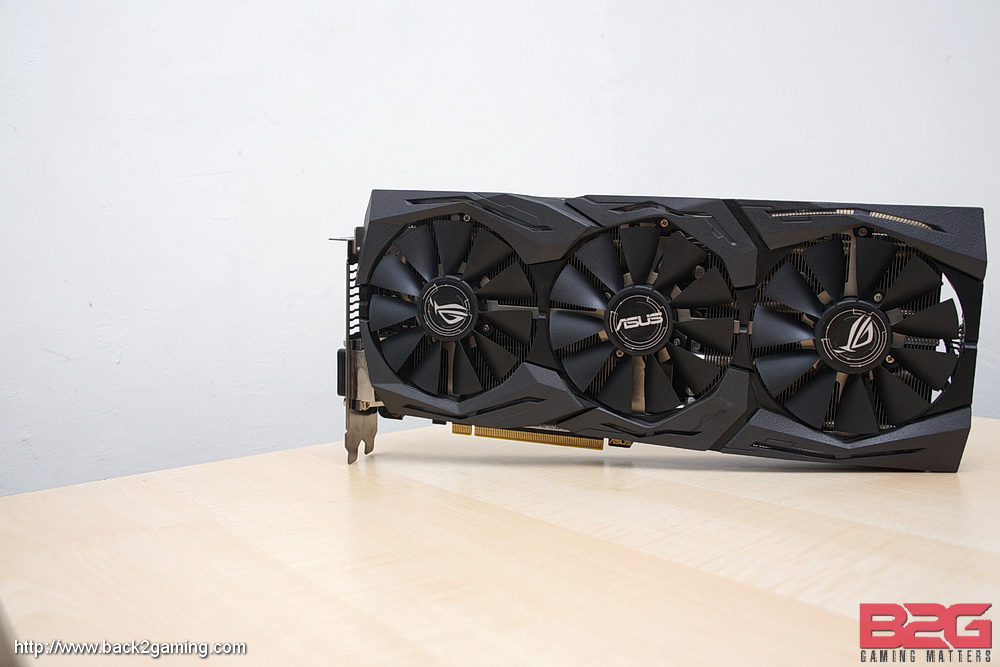
Let’s break down the verdict:
Performance. Relatively-speaking, NVIDIA has no one else to beat but itself with the GTX 1080 and with GTX 980 Ti squarely being beat by the GTX 1080, this is by far the new performance king on the market. On a more specific perspective, the GTX 1080 performs well beyond 1080p and improves on the playable capabilities of the GTX TITAN X and GTX 980 Ti in 4K. While NVIDIA heavily promotes the GTX 1080 for 4K content, the GTX 1080 brings relatively better performance in 4K than previous generations. NVIDIA has made great strides in providing much better performance in this graphics card and there’s simply no questioning that its the new king.
For the ASUS ROG Strix GTX 1080 it does perform closely to the Founders Edition but the cooler operation does allow it to boost a bit higher which gives it overall better performance as we can see in our charts as it spikes higher in some scenes and its frame times is relatively a touch faster than the reference GTX 1080.
Build Quality. The GTX 1080 is an engineering marvel. What AIB partner does to it is up to them but as it is, the Founders Edition brings with it great build quality with an excellent design that certainly exudes a real, premium feel. Enhanced with ASUS’ improved engineering and component technology, the ASUS ROG Strix GTX 1080 is an excellent card made to the finest standards.
Functionality. NVIDIA has improved on many of its current feature set but what it does really well is improve performance in 4K and VR allowing the GTX 1080 to let players enjoy games at an unprecedented quality. This together with the new improvements like Ansel and SMP make the GTX 1080 a feature-rich card made for the modern gaming scenario. ASUS extends the functionality of this card by allowing allowing lighting options to sync with a compatible motherboard and improve case temperate by controlling fans directly
Bundle. ASUS bundles a 1-year premium subscription to Xsplit with your purchase of the ASUS ROG Strix GTX 1080. It’s a $99 value but it probably doesn’t mean anything for non-streamers. Depending on region, ASUS also currently has game bundles with this GPU. Check local listings.
Value. At $699, NVIDIA is asking for a premium for its so-called Founders Edition reference cooler. The GTX 980 was launched with a $549 price tag and the GTX 980 Ti a $649. That said, they don’t pack as much power as the GTX 1080 but NVIDIA itself has announced that the non-FE GTX 1080 will start selling at around $599 basically admitting to a $100 premium for their reference card. At around $720, the ASUS ROG STRIX GTX 1080 sits just on top of that and given its wide range of advantage over the reference card, its easy realize where all that premium comes from.
The NVIDIA GTX 1080 is obviously the new single card performance king and its efficiency is nothing to snuff at. For the Founders Edition, NVIDIA attracts fans of their brand with a stylish new reference cooler that screams the traditional NVIDIA design they love. Performance, quality and efficiency make the NVIDIA GTX 1080 an excellent choice if you’re looking for that signature NVIDIA look together a top-performing card and there is simply no competition out there right now.
The ASUS ROG Strix GTX 1080 has a lot of features usually reserved for higher-end cards but ASUS felt its mainstream line-up deserves such so most of the features we usually see from the discrete ROG line has been inherited by the ROG Strix line which suggests a potential ROG variant to be a tad-bit more premium. That said, the ROG Strix GTX 1080 alone features a wide array of highly advanced features and enhancements that make it a very likable card: its relatively slim cooler and great cooling potential make it a very durable card and the RGB options isn’t that bad. Mix in the excellent build quality and attention to detail make this one of the most powerful dual-slot model around.
With a feature set enough to rival past ROG variants, the ROG Strix GTX 1080 isn’t a beast as some reviews claim it to be; its a refinement to show the potential of the high-end Pascal GPU with its improved cooling and visual appeal.
ASUS backs the ROG Strix GTX 1080 with a 3-year warranty. We give the ASUS ROG STRIX GTX 1080 our B2G Silver Award!
[signoff icon=”dollar”]
Price / Where to Buy:
US – SRP: Approx. US$720- [easyazon_link identifier=”B01GRRRRLO” locale=”US” tag=”back2gaming-20″]ASUS ROG STRIX GTX 1080 OC[/easyazon_link]
PH – Approx. Php43900
[easyazon_infoblock align=”none” identifier=”B01GRRRRLO” locale=”US” tag=”back2gaming-20″]
[/signoff] [section label=”Award”]


